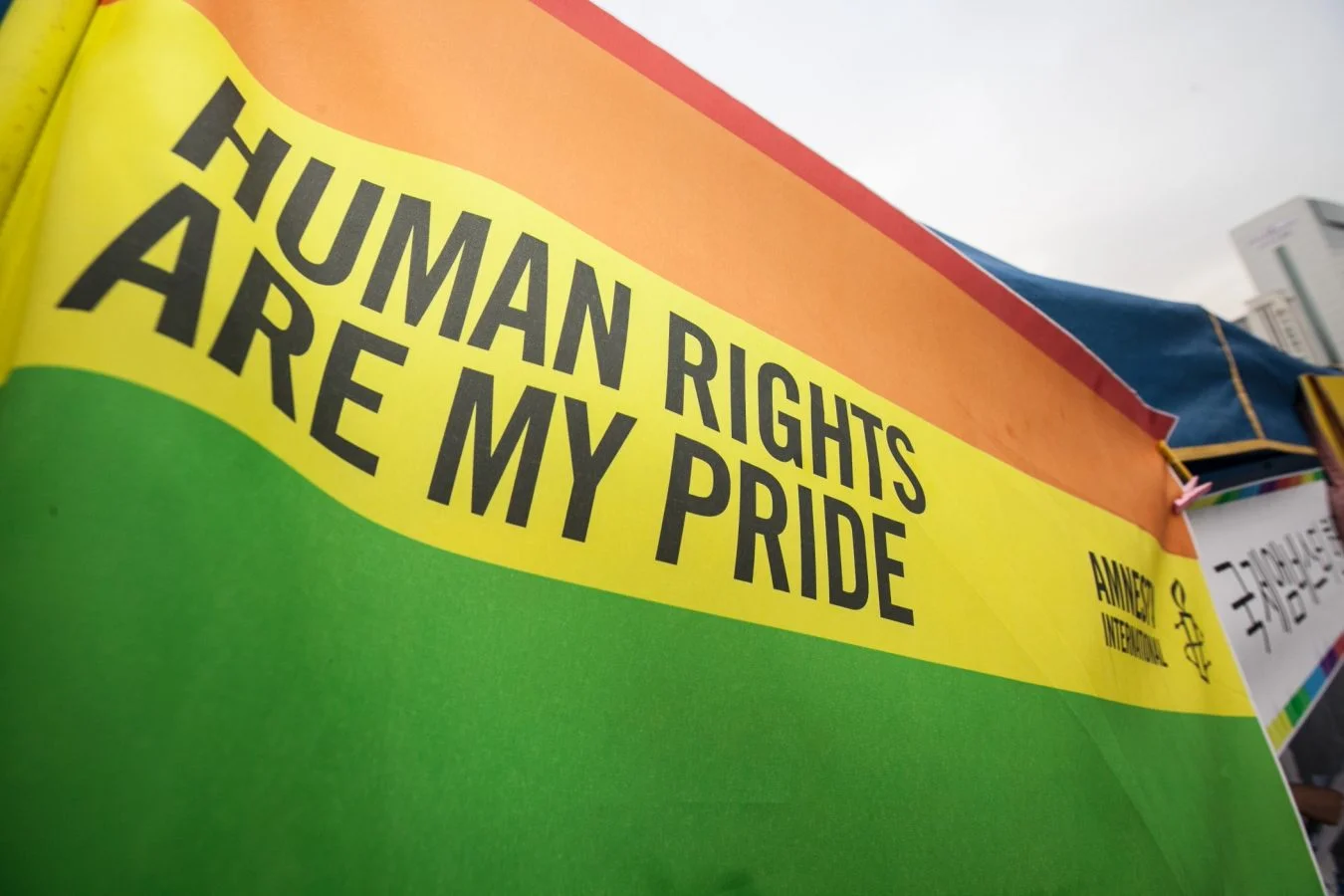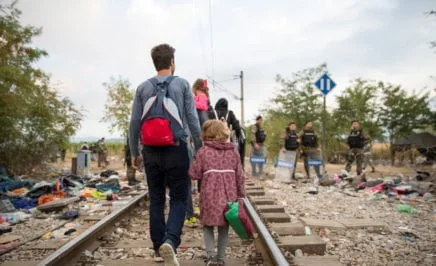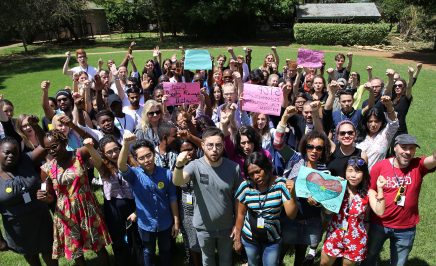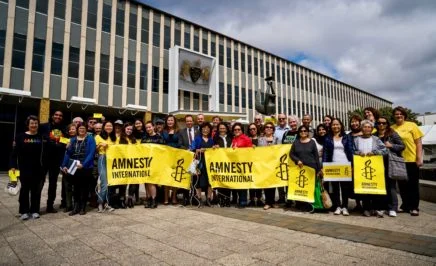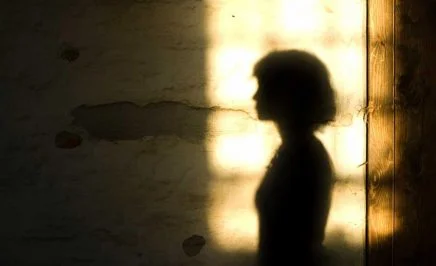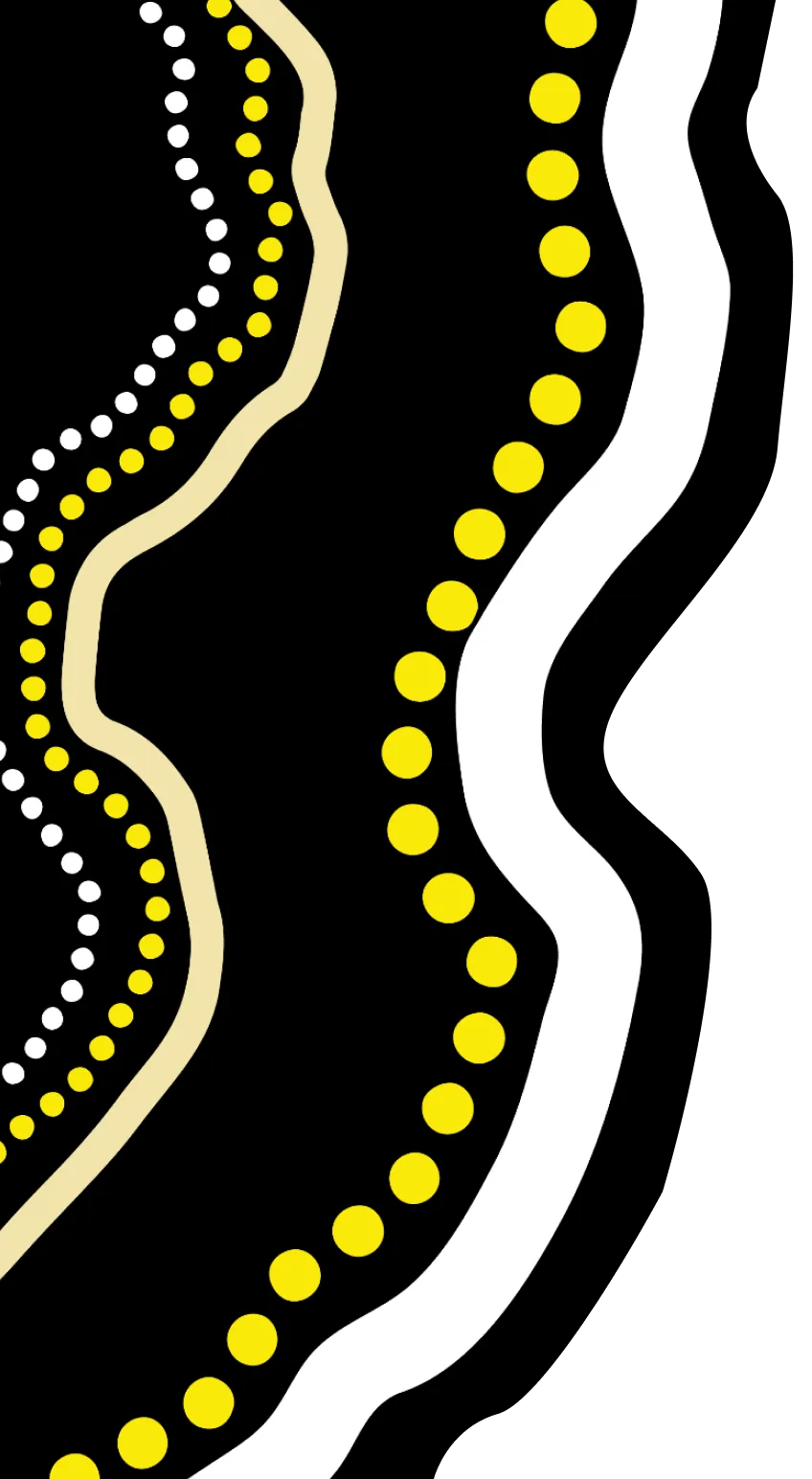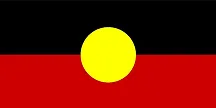To understand what it means to be genderqueer, we must first understand what gender binary is and how it affects our view of gender.
What is the gender binary?
The common Western model of gender is based on the concept of a gender binary, that is, the concept that there are only two genders (men/women) and that these genders are linked to biological sex (male/female). This model is put into practice in a multitude of different ways, some examples include: the labelling of toilets as male/female, gender markers on identification documents, honorific and occupational titles, gendered pronouns, gender reveal parties, medical treatments etc.
Not only does this model fail to account for the existence of intersex people (people born with natural biological variations in sex characteristics such as chromosomes, hormones or reproductive anatomy), it is also a relatively recent model of gender. Until the 18th Century the most common understanding of gender was the one-sex theory – a model which theorised that there was only one essential sex (male) and women were simply a variation of this sex. This model was replaced by the two-sex model, which defined gender in terms of genitals and reproductive organs, and saw women as defined by the possession of a uterus. The theory came to dominate political understandings of gender and to define the modern gender binary.
What does genderqueer mean?
Genderqueer is an identity used by those who don’t identify with the binary gender they were assigned at birth. Genderqueer people may identify as living between binary genders, living outside them or they may reject the notion of binary gender completely. Genderqueer identities may also refer to how people experience their gender over time as something that is fluid and shifting; or as a steady and ongoing sense of sitting outside the gender binary.
Some common misconceptions around genderqueer
There are many common misconceptions about what it means to identify as genderqueer. It is important to understand why these misconceptions are incorrect and what they might reflect about our current understandings of gender. They often come from an understanding of genderqueer people as a homogenous group who experience their identities in the same way. However, like any group of people, not all genderqueer people feel the same way about their identity and expression.
- ‘All genderqueer people want to look androgynous‘
While some genderqueer people do enjoy presenting as androgynous, not all do. It’s also important to note that some genderqueer people may enjoy looking androgynous at one point in their life and not in another. There is no one way to look or be genderqueer, the only way you are able to know how someone identifies is to listen carefully to how they identify themselves and follow their lead.
- ‘All genderqueer people want to undertake or have undertaken hormone replacement therapy‘
Hormone replacement surgery refers to the prescription of masculinising or feminising hormones which may change a person’s physical characteristics. While hormones and gender-affirming surgeries allow some genderqueer people to change their bodies to present in a way they prefer, not all genderqueer people are interested in hormones or surgery, and choose to express themselves in a variety of other ways.
- ‘All genderqueer people use they/them pronouns‘
Firstly – what are pronouns? Pronouns are words that take the place of nouns to refer to someone, some examples of pronouns include he/him, she/her, they/them. While pronouns themselves do not have a gender some genderqueer people feel more comfortable using pronouns which reflect how they wish to be referred to. There are many pronouns that genderqueer people can use to refer to themselves: including she/her, he/him, they/them, xe/xir, ze/zim etc. Some genderqueer people will use multiple pronouns: she/they or xe/they, and others may use the pronouns they were assigned at birth.
- ‘All genderqueer people hold the same political views‘
Being genderqueer doesn’t define the goals, expression or aims of any one person. For some people being genderqueer is a large part of how they see themselves and their identity, but for others it is just another part of who they are. Not all genderqueer people want the same things, or express themselves in the same way and there are many debates within the genderqueer community about the meaning of different words and identities.
- ‘Transgender, non-binary and genderqueer are just different words for the same thing‘
While these identities are all related, each identity refers to a slightly different experience of gender. However, they are all considered umbrella terms for a range of different gender identities. While ‘transgender’ most often refers to people who do not identify as cisgender (the same as the gender they were assigned at birth), not all genderqueer people identify as trans for a number of different reasons. Similarly, while non-binary identities refer to people who identify as outside the gender binary, not all genderqueer/non-binary people identify with both terms. The difference between these terms can be nuanced and complex, but what is most important is to listen to each individual and use the term they prefer.
How do people know they’re genderqueer?
One of the most common questions genderqueer people are asked is, “but how do you know?” While this may seem like a normal question to ask, it’s important to think about what this question is really asking. It can be difficult to understand an identity you haven’t heard of before, however, asking “how do you know?”, forces genderqueer people to defend their identity. A better way to understand this is to think of this question as if someone was asking “how do you know you’re happy?” While after some thought you might be able to articulate what happiness feels like to you, it would be almost impossible to explain how you know that feeling or what it might feel like for someone else. Furthermore, while you might be able to explain the feeling, it’s impossible to prove that you’re happy to anyone else. In the same way asking “how do you know?” forces genderqueer people to prove how they feel is valid rather than accepting their own experiences as truth.
Why is understanding genderqueer-ness important for human rights activism?
There is still a lot of important work to be done in Australia to protect the rights of genderqueer people, while the Sex Discrimination Act 1984 makes it unlawful to discriminate on the basis of sexual orientation, gender identity or intersex status, there are still a number of religious exemptions to this law, and little in place to support genderqueer/transgender people who experience abuse, hostility and harrassment on an often daily basis.
There are a number of Amnesty International Australia campaigns which are pressuring governments to enact much-needed legislation which will offer more support for genderqueer/transgender people, as well as combating existing discrimination.
These campaigns focus on empowering genderqueer people to be legally recognised for their identity. Such as Amnesty’s campaign for the Queensland government to amend the Births, Deaths, Marriages and Registration Act 2003.
Other campaigns focus on introducing legislation which will protect against discrimination and harmful practices. Recently, Victoria’s Legislative Council passed the Change or Suppression (Conversion) Practices Prohibition Bill (2020), a world-leading bill that protects LGBTQIA+ Victorians from harmful change or suppression practices otherwise known as conversion practices. While this bill puts in much-needed legislation, there are still a number of states and territories which have no laws in place to protect LGBTQIA+ Australians from the harm caused by conversion practices, and despite legislation being introduced in the ACT and Queensland in 2020 these laws require amendments to offer adequate protection for LGBTQIA+ Australians.
Overall, Amnesty supports an Australian Human Rights Act, which would ensure that the rights of all Australians are equally protected. Currently, genderqueer identities are protected in international human rights law by the Yogyakarta Principles and the International Covenant on Civil and Political Rights (ICCPR). The Yogyakarta Principles act as a universal guide to human rights which contains precepts to guarantee the equal treatment of LGBTQIA+ people. The ICCPR also enshrines equal and non-discrimination treatment for all Australians. An Australian Human Rights Act should follow these principles to enshrine equal rights without distinction of any kind such asrace, colour, sex, language, religion, political or other opinion, national or social origin, property, birth or other status.
While there is still much to be done in Australia, internationally there are still many countries where genderqueer/transgender identities are not only discriminated against but criminalised. You can find more information about Amnesty’s LGBTQIA+ rights campaign work here.
Robbie Wardhaugh (they/them), a genderqueer activist living and working on Gadigal lands.
